If you want your stakeholders to listen, you have to prove that your messages have value
The perception that key stakeholders like referring physicians and patients have about your hospital is crucial. If it’s good, your stakeholders want to serve or be served by your hospital. On the other hand, if people hold a negative perception about your hospital, it can have an impact on everything from staff retention to patient volumes. A differentiated positioning sharpens the perception of the value of a hospital, increasing its attractiveness in the eyes of all audiences. So how can you boost the perception of your hospital? To answer this question, there are two key areas to explore: How can you develop a relationship with your target groups that is based on trust? And how can you become a reliable partner that people listen to?
To start, you need to profile your hospital as a reliable partner for its stakeholders, where it is a positive experience to work with the doctors and staff of the hospital or to use the services. This can only be done by implementing an appropriate content strategy (content marketing), that meets the information expectations of the stakeholders, and also positively reinforces their relationship with the hospital (whether as a physician, care provider or patient, for example.)
When developing a content strategy for your hospital, these are some key points to consider:
1. Who will read your content?
Who is the target audience for your content? How many audiences are you creating content for? By using a variety of content types and channels, you can deliver different content to each type of audience you have in mind and engage everyone you have a professional relationship with. Note that "audience/stakeholder/interested parties" are generic terms that we use for convenience. You will need to drill down and itemize all of your audience groups in detail. For example, "referring physician" as a category does not really exist. There are referrers who have an active referral relationship with the hospital, others do not, and some sporadically. After all, to whom do they refer? How loyal are they?
2. What problem are you going to solve for your target audience(s)?
Ideally, your organization should solve a need that you know your stakeholders have. You may have already done surveys, but when the view on the needs and expectations of your stakeholders is not clear enough, listening sessions can provide the solution – telephone or live conversations that give more insight into the real expectations and needs of your target groups.
A good content strategy supports people on both sides of your service: those who have yet to identify their key challenges, and those who are already using your service to address those challenges.
Curious to see how
we put this into practice?
In this case we developed a new identity for one of our customers in healthcare to position the hospital more precisely with key target groups.

3. What makes you unique?
Other hospitals likely have similar services, which means your audiences need to know what makes your service better suited for them – or at least different. This is where content comes in. To prove why your stakeholders should use your services, you need to prove first why you are worth listening to.
4. What content formats will you focus on?
What forms will your content take? Infographics? Video clips? Blog posts? Professional magazines for referring physicians, brochures for patients, Instagram instant experiences for a younger audience of future employees ... Once you've established what topics you want to focus on , you need to determine what formats you need to budget for in order to put that focus forward.
5. What channels will you publish on?
Just as you can create content in different formats, you also have different channels that you can publish to. Channels can be your own, like your website and blog, and social media pages, like Facebook and Twitter. You can also publish on paid channels, such as sponsored posts on social media channels or display and search ads on Google. Finally, you can also have a presence on channels that you "earn," such as newspapers and TV programs, because you are perceived as an important expert in the debate at hand.
6. How will you manage content creation and publication?
Figuring out how you're going to create and publish all your content can be a daunting task. It's important with a content strategy to know who is creating what, where it will be published, and when it will go live.
At Living Stone, our content strategies prevent clutter and confusion by managing content from a thematic standpoint. When you plan an editorial calendar around topics, you can easily visualize the message of your organization, department or clinical service and establish yourself as an authority in your knowledge domain over time.
If you know your goals before you start planning, you'll have an easier time determining the best strategy.
The objectives must be SMART:
- Specific: The goals should be specific. The more detailed the better.
- Measurable: Goals should be measurable so you can see progress and adjust accordingly.
- Achievable: The goals must be achievable; if they are not, rewrite them!
- Relevant: The goals should be aligned with your or your organization's values and long-term vision to have a real impact on change and performance.
- Time-bound: A goal has a deadline.
Living Stone can assist you in this process and can guarantee full implementation of all the tools and channels through which you can profile yourself and your organization as a reliable partner. For more information or to exchange views, please contact Anne-Mie Vansteelant at anne-mie.vansteelant@livingstone.eu, or call at +32 (0)55 59 10 01.




